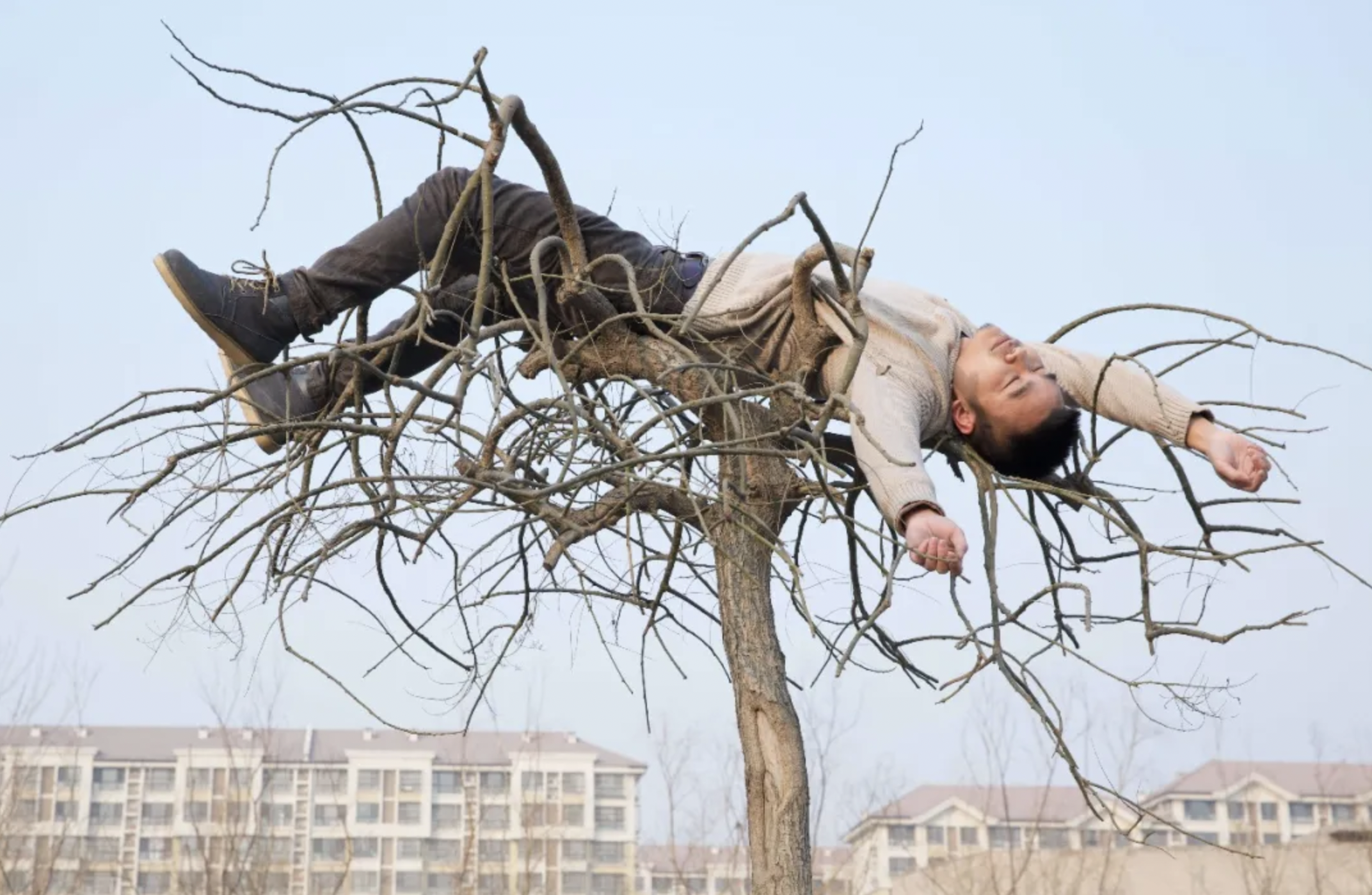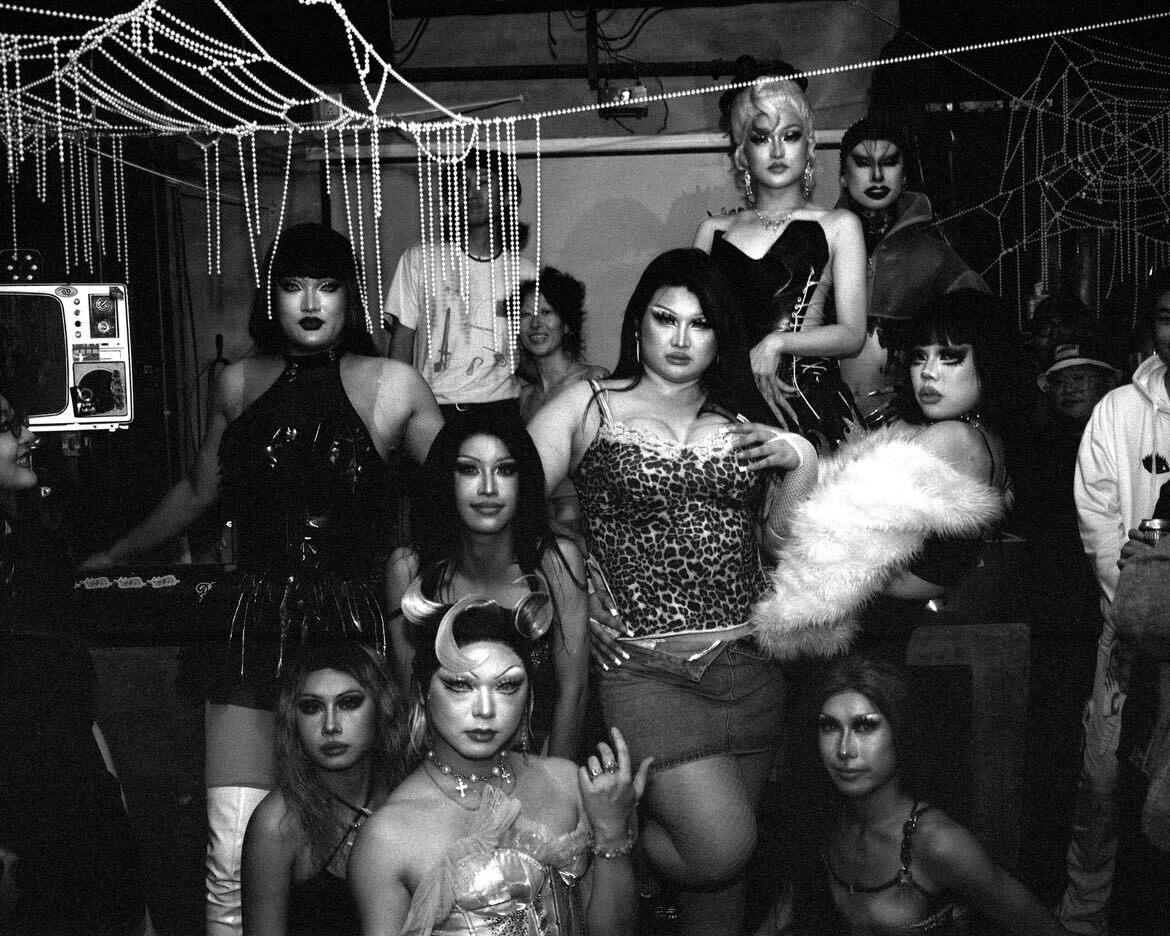China’s metropolises are sprawling, densely packed, and unsurprisingly congested. Shared bikes, which have become commonplace in urban parts of China since at least 2017, have served as a smart solution for navigating traffic jams. But an unfortunate spillover effect is a pile-up of abandoned bikes, which has birthed a new urban spectacle: Bike graveyards.
According to Chinese state media CGTN, at least 10 million shared bikes — making for thousands of metric tons of waste — had been scrapped by 2020. The figures have disturbed multiple parties, from government officials and shared-bike companies to environmentalists. Still, few have made quite a statement like an artist collective based in the city of Hangzhou, in East China.
Organized by emerging artist Yique (pseudonym) on April 2, 2022, Why Public Art was a performance art piece and exhibition that shined a light on the ‘shared bike issue’ and served as a “direct reference to the wanton waste and destruction of public resources by citizens.”
The creative undertaking featured 30 Hangzhou-based artists, and the performative aspect involved the creatives riding shared bikes through the city. It was part of a series of exhibitions titled Aura, which aimed “to reconstruct the sublime nature of contemporary art.”


Artists planning biking routes for Why Public Art
The participating artists organized via Chinese super-app WeChat to plot customized biking routes ending at the Powerlong Art Center. When they arrived at the art hub, the artists dismounted their metal steeds and stacked them at the exhibition hall’s entrance.
More than a means of getting to their destination, the shared bikes also served as unconventional canvases: The artists expressed their opinions about bike waste by adorning their manually-powered two-wheel vehicles with unique decorations.
Curator Yique, who also participated in the exhibition, chose to decorate his bike by attaching a QR code for his WeChat profile on the handle. But instead of talking up his own work, he waxes lyrical about a fellow artist’s creative approach.
“My favorite artwork is by Jinning Zhang, who affixed a North Korean 1,000 KPW note to a bike basket using scotch tape. Nobody could remove it,” says Yique. “I assumed it was a metaphor for politics and power, but everything needs to be interpreted by the audience. It’s pointless to spell it out.”
According to Yique, quite a few works, including an outspoken piece satirizing Shanghai’s lockdown (which was happing at the same time as the performative bike ride), were also a response to current social conditions.

Holding public art events necessitates constant negotiation among different parties, and organizing Why Public Art was no exception.
“The most interesting but toughest part is asking for permission,” opined Yique. “We needed to ask Powerlong Center for special cooperation so that our artists could move their bikes into the shopping mall, go all the way through the crowd, and arrive at the show block. People never see anyone getting into the mall with shared bikes — commonly, it’s not allowed. They were shocked and curious.”

A shared bike with a touch of pink, an art piece at Why Public Art
After learning of the exhibition in the local news, many gravitated toward the event and became deeply engaged with the works.
“Some saw this project and immediately fell in love with it. They attended the remaining Aura exhibitions. A few found the bicycles with my profile’s QR code and added me, and we chatted for a long time,” Yique tells RADII.
One comment particularly struck him: “You are so bold. Aren’t you afraid of being arrested for doing this kind of thing?”
Though practicing public art comes with risks in China, Yique believes it shouldn’t be a “Pandora’s box that nobody should open.”
That said, public art has a long way to go in the country — at least, in Yique’s eyes:
“The public is not even aware of the existence of public art. When people see public sculptures, they don’t interpret or explore the meaning behind them, and they don’t care who made them or how they feel after seeing them.”
This seems a shame, as public art is more politically and ideologically functional in China, says Yique, who also believes art should be down-to-earth and approachable.
In an artist statement for Why Public Art, Yique writes: “We always talk about letting art go to the masses, but in the end, we find that art is always elitist.” In this sense, for him, public art is an effective medium to involve the masses in art and artistic creation.
“The juxtaposition of the ‘publicness’ of the creator, the ‘publicness’ of the art material and the ‘publicness’ of the display space — all allow the work to reconfigure the inherent concept of public art in a ready-made manner,” states Xinghao Liang, another initiator of the exhibition.

A shared bike adorned with a water bottle label, an art piece at Why Public Art
After the event, the bicycles were returned to parking spots in Hangzhou, ready to be used by the city’s citizens again but imprinted with artistic reflections on the waste of public resources.
Cover image designed by Haedi Yue; all image courtesy of Yi Que Studio

















